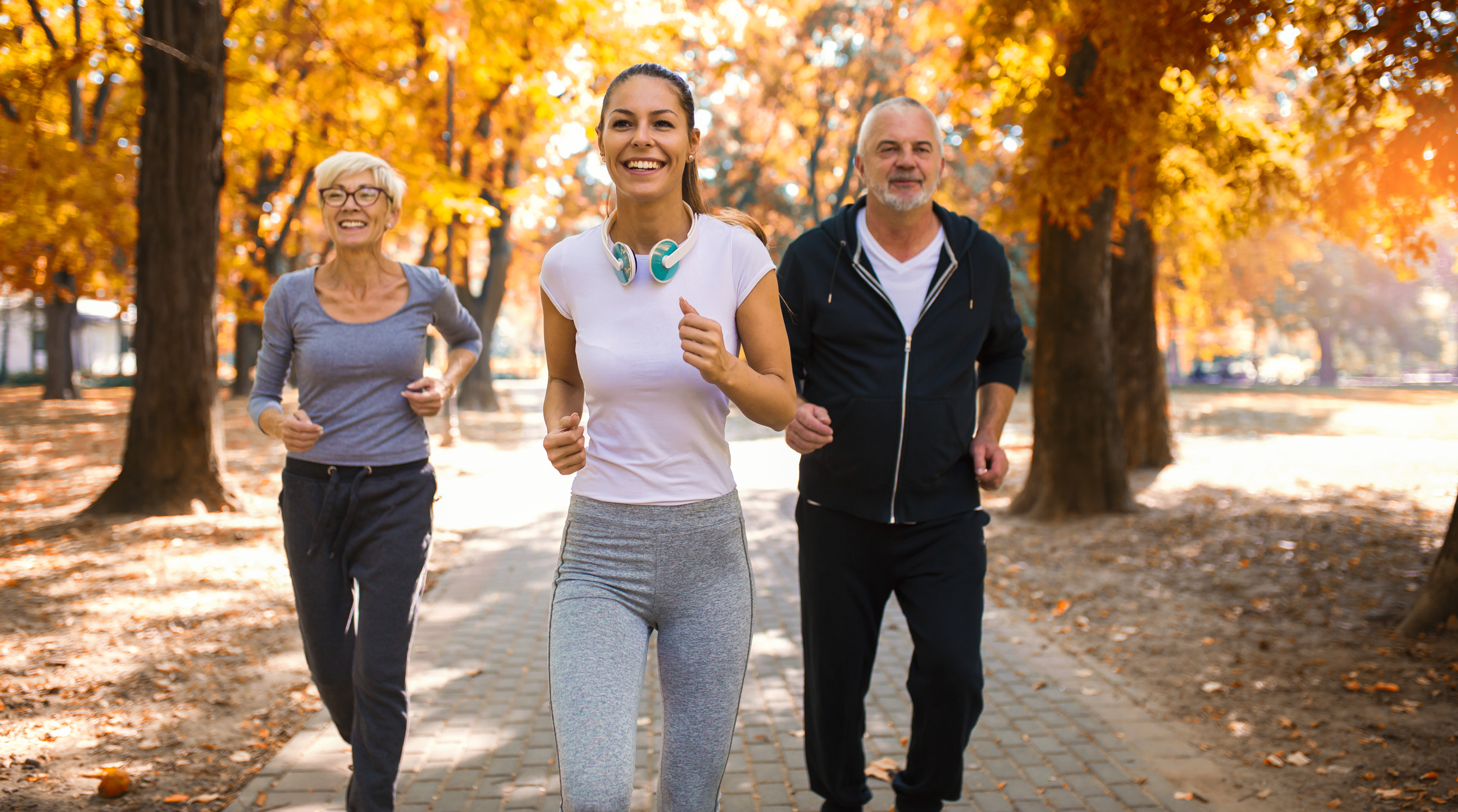
The hump. The hunchback. Dowager’s hump. The medical term for this condition is “Kyphosis.” But it is a condition that nearly all people recognize on sight even if they can’t name it.
When you are young, you always think the hump will never happen to you. Your body is young and strong. Your vertebrae, core muscles and bones are hale and hearty. You look and feel great and you have no trouble moving and staying active in all the ways you enjoy.
But then you begin to get older and your bones, muscles and ligaments start aging too. One day you walk past a mirror or reflective window and….whoa. Is that “the hump?” Say it isn’t so!
In this article, find out what causes geriatric kyphosis and learn about 10 reasons to stay active post-retirement that will naturally improve your posture, your wellbeing and your enjoyment of life!
1. Staying active helps you sleep better.
With as many as one out of every three adults struggling to fall asleep and stay asleep, it is no wonder there are so many sleep supplements and medications on the market today.
But according to the National Sleep Foundation, staying physically active is one of the best and most reliable natural remedies for occasional or chronic insomnia.
Physical pain, such as the discomfort arising from a developing dowager’s hump, can be a significant barrier to getting the rest you need. You don’t have to let a sedentary lifestyle rob you of the sleep you crave and deserve.
Even 20 minutes per day of sustained cardiovascular activity is considered enough to promote more restful sleep at night.
2. Staying active nurtures new social connections.
According to the Journal of Gerontology, up to one-quarter of geriatric adults suffer from significant social isolation today.
The truth is, it can get a lot harder to meet new people and make new friendships later in life….unless, that is, you choose to stay active.
In addition to the many other benefits of an active lifestyle you will read about here, staying active also gives you the opportunity to cross paths with people you might never meet in any other way. Some of those people just might end up becoming new lifelong friends.
3. Staying active slims and tones your physique.
You don’t have to look very far to find copious statistical evidence that keeping the weight off gets harder as the years keep passing.
The American Association of Retired Persons American Association of Retired Persons (AARP) recently reported that we are getting wider a lot faster than we are getting taller, especially as we age.
This is not only concerning from a self-esteem and wellness perspective, but it is also closely linked to sarcopenia, the progressive loss of muscle mass that is considered a natural part of the aging process.
Along with sarcopenia often comes the beginnings of the hump, as muscle mass decreases and muscle tone along with it. Soon, you catch yourself joking with your friends about how you are all shrinking.
But you can absolutely do something about it or even prevent it if you start early enough. Staying active can help you keep the weight off and reduce your risk of contracting other age-associated serious medical health issues like diabetes, hypertension and cardiovascular disease.
4. Staying active makes new neural connections.
If you have never seen a speed walker in action, these walkers can WebMD reports that adults are nearly as afraid of getting Alzheimer’s disease as they are of being diagnosed with cancer.
And yet scientists have known since 1999 that the human brain is capable of learning new skills and making new neural connections at any age!
This is even the case if an area of the brain has become damaged or inaccessible for some reason, such as due to a stroke or a traumatic brain injury. A new area of the brain can learn to do the same skills the damaged area used to perform.
What this has taught us is that an engaged, active, learning brain is one that is less likely to fall prey to cognitive decline. Staying active and moving your body also helps you keep moving your mind and making the new neural connections that will support healthy brain activity all throughout life.
5. Staying active decompresses your spine.
The International Sports Sciences Association (ISSA) highlights the critical link between physical exercise, decompression and a straight spine.
Compression of the spine sends tens of thousands of people to the chiropractor each year seeking relief (as well as lost inches).
But simple physical activity, such as pilates, yoga, stretching, swimming and other posture-enhancing exercise routines can serve equally well to decompress your spine, improve your posture and ease any early signs of kyphosis in the process.
6. Staying active is lung and heart healthy.
Even spending too much time hunched over a smart device or laptop can trigger the beginnings of kyphosis. But it can also do worse than that – it can decrease lung and heart function as well.
The University of Maryland Medical Center (UMMC) highlights a number of additional serious health issues caused by curvature of the upper spine: nerve damage, chronic pain and permanent spinal deformity.
But the good news is that UMMC also emphasizes that kyphosis is often correctable without the need to resort to uncomfortable body braces, invasive surgery and other similar interventions. Often all that is needed is some postural education and retraining along with a recommitment to an active lifestyle!
7. Staying active wards off depression and anxiety.
To hear the esteemed Mayo Clinic tell it, exercise is one of the best natural remedies to ease the symptoms of depression and anxiety.
A number of factors can trigger temporary or chronic depression and anxiety, one of the most common among them being change. Change may be unwanted or wanted. It may be a small or a big change. But change can leave us feeling ungrounded and that can cause anxiety and depression.
Here, it is important to know that one of the side effects of anxiety and depression is often a lack of desire and motivation to exercise or get moving. But once you do get active again, this is when the symptoms often start to lift.
The good news is, there are lots of ways to reengage your body and mind – and there is a difference between “exercise” and “physical activity.”
The former can sound dry and dull when you already feel down or anxious. In contrast, the latter can be anything active that you remember enjoying in the past – walking your dog, gardening, playing jump rope with your grandkids and walking around the pond at a local park are some examples many people enjoy.
Once you get your body moving, it will start producing endorphins. Endorphins earn their nickname of “the feel good hormone” honestly – they are natural mood-lifters with effects that can linger for hours after your activity session is over.
8. Staying active is empowering (and also fun)!
If you are struggling against the onset of kyphosis, you may be feeling discouraged, depressed or anxious about your prognosis and quality of life in the future.
With an estimated 40 percent of the adult population impacted to some degree by kyphosis, it is safe to say you are not alone in your concerns.
But sometimes just realizing that kyphosis is not uncommon among older adults can help you feel less isolated in your worry and more open to taking action on your own behalf.
This, in turn, can feel very empowering and may even introduce you to fun new activities you would never have thought to try otherwise.
9. Staying active eases pain.
According to the Centers for Disease Control (CDC), as many as 40 percent of adults today may suffer from chronic pain.
The American Academy of Orthopedic Surgeons (AAOS) reports that there are several forms of kyphosis but all cause some degree of chronic pain that tends to worsen over time.
Researchers have now learned that staying physically active, whether through exercise or some other means, can actually change how the brain perceives pain stimuli, thereby reducing the perception of pain.
And in fact, the Journal of Practical Pain Management (PPM) states that exercise and physical activity should be a prescription physicians give to patients who are experiencing chronic pain. This is how reliable exercise and activity is as a method of pain relief.
10. Staying active makes you happy.
Researchers have studied the link between activity and happiness from nearly every angle. What they have discovered might surprise you, however.
The specific chemicals released in your brain after a period of physical activity have an affect that is not unlike powerful drugs such as morphine, heroine or cocaine.
These chemicals, endorphins and proteins called Brain-Derived Neurotrophic Factors (BDNFs for short) not only block pain but also induce feelings of wellbeing and even euphoria, according to researchers at Bryn Mawr University.
If you are slowly watching your upper spine curve or you have seen this happen to a loved one and have vowed not to let it happen to you, now you know what to do to improve your spinal health and your outlook on life.
Get a Personalized Exercise Prescription Just for You!
WebExercises is an online platform with more than 3,500 different exercises and fitness routines tailored to every need and interest. With a little help from WebExercises, you can be on your way to a straighter spine!
Contact your health care provider for a WebExercises prescription that is personalized and tailored to your specific health condition and fitness goals. A WebExercises prescription can get your fitness walk program off on the right foot so you are looking and feeling your best quickly.
The WebExercises Story: Created by Clinicians for Clinicians
We understand the challenges that clinicians face on a daily basis: lack of patient engagement, high drop-out rates, time-crunched clinicians. We developed a solution for you and your patients that provides you with great clinical education, efficient and evidence-based exercise programming, and an engaging patient experience . To find out more how WebExercises can improve your practice call us 866-411-4825 or visit webexercises.com.

